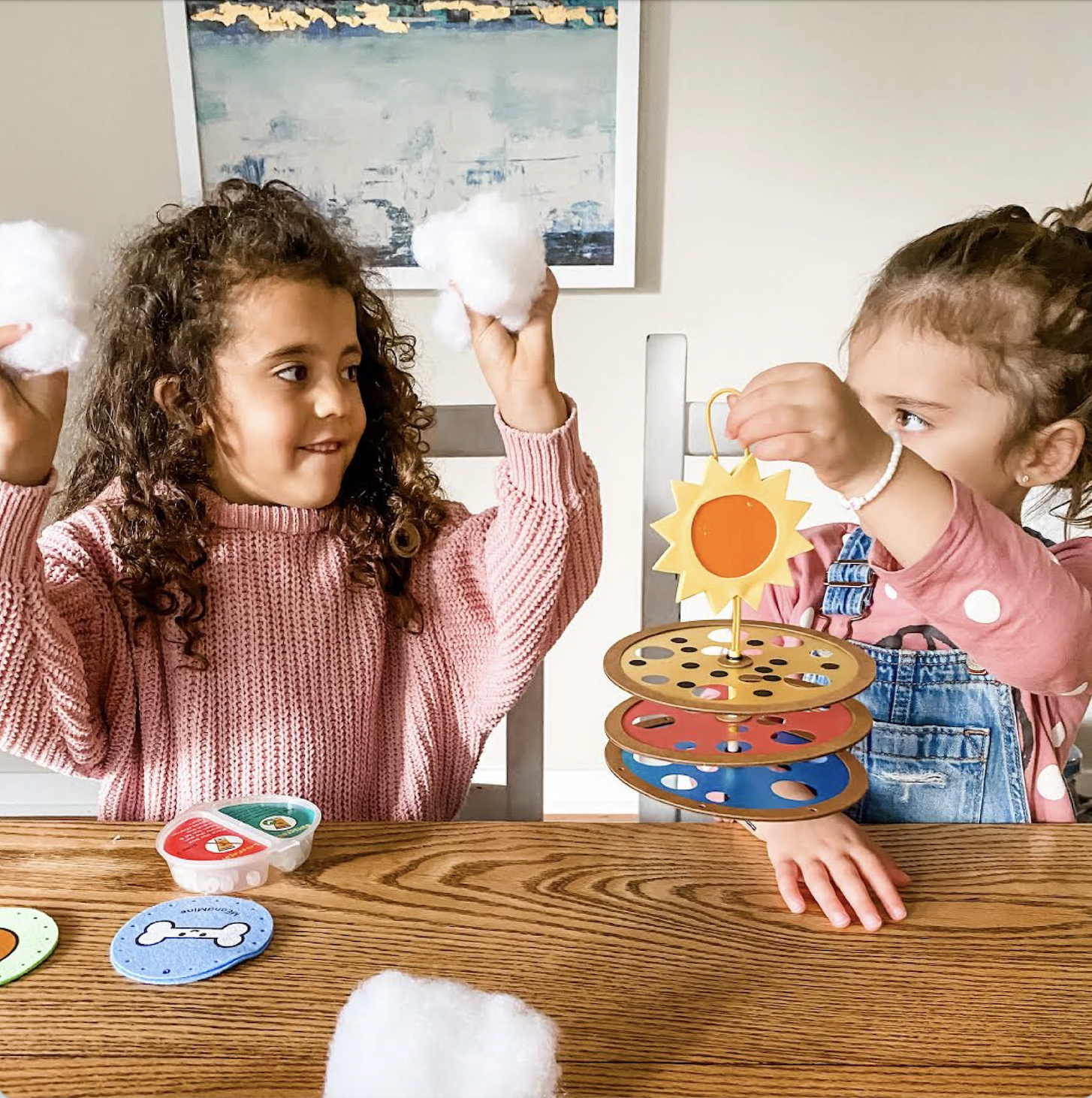
How to Explain Daylight Saving to Kids: Fun Facts, Activities, and Tips
How to Explain Daylight Saving Time to Kids

What is Daylight Saving?
Daylight Saving was an idea proposed by George Hudson in 1895. A common misconception by Americans is that Benjamin Franklin started the idea of Daylight Saving Time. Benjamin Franklin only suggested that the French people in Paris change their sleep schedules to reduce the use of candles and oil for lighting, which he casually mentioned in one of his satirical essays. However, the idea for saving energy and resources for lighting is a similar idea that George Hudson. Regardless, George Hudson’s idea stemmed from his desire to spend more time in the sunshine after a long day of work during the summer days. Thus, he suggested a two-hour time shift, which we now know as, Daylight Saving Time. Though this was a simple proposal, his ideas were not implemented until seven years later, when William Willett proposed this idea to England’s Parliament as a method of saving energy. When teaching your little ones about Daylight Saving time, try using the cartoon strip above to show them the overall story!
When does it happen?
Daylight Saving happens twice a year, and these occurrences can be referred to as spring forward and fall back. What does spring forward mean? Well, take a guess! It means exactly what it implies. In the Spring, you move your clock one hour forward, and for fall back, you move your clock one hour back in the Fall. Now, remember, Daylight Saving starts at 2:00 am on the second Sunday in March, March 13th, 2022, and ends on the first Sunday on November 6th, 2022.
Why do we have Daylight Saving Time?
Some people believe that Daylight Saving Time started for the purpose of giving farmers an extra hour of sunlight, but in reality, this is a common misconception. The original idea stemmed from our attempts to save energy. People believed that if we shifted our clocks forward by an hour in the Spring, then we would be able to maximize the amount of sunlight we utilize every day instead of relying on electricity.
Daylight Saving Time Fun Facts:
1. Hawaii and Arizona do not participate in daylight saving time
2. Daylight saving occurs twice every year.
3. Daylight saving starts at 2:00 am on the 2nd Sunday in March and ends on the 1st Sunday in November
4. Many people think it’s called Daylight Savings Time, but it’s actually called Daylight Saving Time
5. TV channels dislike daylight saving time because the number of TV viewers decreases in the springtime due to the extra hour of sun
6. Daylight saving time was first practiced by Germany during World War I
7. During Daylight Saving Time, there usually is an increase in consumer spending
8. Research suggests that Daylight Saving Time is associated with lower levels of crime
9. Japan, India, and China do not partake in any form of Daylight Saving Time
10. Many states want to stop partaking in Daylight Saving Time

Things you and your kids can do with the extra hour of sunlight:
- Play soccer
- Play tag
- Ride a bike
- Go fly a kite
- Go rollerblading
- Have dinner outside
- Have a picnic while watching the sunset
- Play basketball
- Play volleyball
- Plant a tree
- Go on a scavenger hunt
- Play frisbee
- Go on a walk or a hike
- Make a fort in the yard
- Put on a talent show in the backyard

Though the extra hour outside soaking in the sunlight can be fun, don't forget to use sunscreen to protect your kiddo’s skin from all the intense UV rays. Check out the Sunshine Mischief STEAM box for an exciting hands-on UV and sunscreen lab where you learn about the importance of sunscreen while also making your own smart UV keychain!
Proponents of Daylight Saving Time
Not everyone agrees with the concept of Daylight Saving Time. Proponents of Daylight Saving Time argue that having longer evenings with sunlight incentivize people to leave their homes more, and avoid a sedentary lifestyle. Sedentary lifestyles contribute to many health issues, including diabetes and obesity. With a longer evening, people can have more time for outdoor activities. Sedentary lifestyles is one of the leading causes of sickness and even death in America. Furthermore, being outdoors has several health benefits - it reduces blood pressure, it improves your mood, it helps you sleep better at night, and it helps your body with the production of Vitamin D.
Although people may not spend their “extra” hour of sunlight outdoors, at least having the option to go outside is already a huge benefit. In addition to the benefits of physical activity, people may also spend more time and money on leisurely activities, thus supporting small local businesses. As described, people may shop more, dine more, and attend more outdoor events with daylight. Social, outdoor events further increase the mental health of everyone. This has been very apparent with the rise of the COVID-19 pandemic.
Additionally, safety is a large argument for proponents for Daylight Saving Time. Statistical studies found correlation between an extra hour of sunlight and a reduction of pedestrian fatalities and of robberies. Overall, Daylight Saving Time improves the physical, social, and mental health of people by providing an extra hour of sunlight!
Opponents to Daylight Saving
Your kids (or even teenagers) might complain about “losing” an hour of sleep when you “spring forward”! Your kiddos aren’t wrong. Many people have been against Daylight Saving Time and in fact, some countries don’t even incorporate it. Why? Many people say that Daylight Savings helps save the environment because people use artificial lights less for that one hour of sunlight.
However, in today’s society, with the heavy increase of TV-screens, computers, and air conditioning, the amount of energy saved from Daylight Saving is actually negligible. In fact, some cities and states end up spending more energy changing clocks and re-engineering several public services such as street lamps and building energy usage to account for Daylight Saving.
In addition to the negligible and sometimes increasing cost, Daylight Saving also disrupts the human body’s circadian rhythm. People with serious insomnia, anxiety, or other mental or physical health issues can suffer from readjusting their sleep schedules. Many statistical studies have found a correlation between Daylight Savings to more car accidents, injuries, suicide, and even miscarriages! Although “springing forward” may inconvenience you and your kids a bit, it may have serious consequences for others!
Parent’s Survival Guide to Daylight Saving Time
How do I prepare my kids for adjusting to Daylight Saving Time? Daylight Saving Time happens twice a year, so what? Though a simple one-hour difference seems like nothing, these little changes can drastically impact your child and even your schedule.
How to Care for Your Little Ones in Preparation for “Spring Forward”
For "spring forward," we lose an hour of our day. Some of the amazing parts about spring forward are the extra hours of sunlight we can enjoy during the summer. Though the extra hour is perfect for the summertime, it does also mean that the sun sets later, which can throw off our sleep cycles. Since our circadian rhythm, our internal clock that is in control of our wake and sleep cycle, is influenced by our environment, the extra hour of sunlight can prevent our body from producing melatonin, a hormone that makes us sleepy at night. The extra hour of sunlight can cause our little ones to get tired later and sleep later. To help the kids adjust to these changes, expert Dr. Alon Avudan, the director of UCLA Sleep Disorders Center, suggests:

Preparation for “Fall Back”
Unlike "spring forward," people are often glad when Daylight Saving is coming to an end, and we gain back an extra hour. However, this extra hour that we gain back can dramatically impact your child and even you as a parent if you don't prepare for these changes in advance. With "falling back," your child, who probably already gets up early in the morning, will end up waking up an extra hour earlier than you expect and falling asleep one hour earlier than usual. How do we fix this and make the end of Daylight Saving a more enjoyable time for all of us? Lucky for us, there's a pretty easy solution!
According to expert Craig Canapari, M.D, who works as the director for Pediatric Sleep Center at Yale-New Haven Hospital, adjusting your kid's bedtime three days before "fall back" occurs is the key. Three days before Daylight Saving ends, push your child's bedtime back by 30 minutes. For example, if your child sleeps from 8:00 pm to 7:00 am, adjust their bedtime back to 8:30 pm to 7:30 pm three days before the end of Daylight Saving.
Tips from Experts on How to Survive “Fall Back”
1. Adjust your kid’s bedtime 3 days before Daylight Saving Time ends.
2. Move your kid’s bedtime back by 30 minutes for 3 consecutive days
3. Tire the kids out with physical activities in the day
4. Be sure to keep the window covered within your kiddo’s rooms to block out the sunlight in the morning to help them sleep in in the morning
Check out this fun way to learn more about Daylight Saving: MEandMine Daylight Saving Time Board Game

Things You Will Need:
- MEandMine Daylight Saving Board Game Printable
- MEandMine Did You Know Cards
- MEandMine Daylight Saving Trivia Cards
- Printable Dice
- Game Pieces
How it Works
The goal of the game is to learn more about Daylight Saving Time and test your knowledge on Daylight Saving Time!
How to Play
Determine who goes first based on your birthdays. Take turns starting from the youngest to the oldest player. Start your turn by rolling the MEandMine special dice and taking as many steps forward depending on what you roll. Check out the special tasks you complete when you land on the trivia tile or did you know tile. When you land on the "spring forward" tile, make sure you move one extra tile forward to signify the start of Daylight Saving Time! When you land on the "fall back" tile, make sure you move one tile backward to mark the end of Daylight Saving Time. The game ends when someone makes it to the finish line!
How the Trivia Cards Work
When you land on the trivia spot on the board game, draw a trivia card and be ready to answer the question. If you don't know the answer, take a guess or "ask the room". How "ask the room" works is that all the players can work together to find the answer. If the answer the group picks is the correct answer, then all players advance by one spot. If the answer is incorrect, then nothing happens, and the player's turn is over.
How the Did You Know Cards Work
When you land on the did you know spot on the board game, draw a did you know the card and read the fun fact out loud for everyone to hear. Make sure pay attention because these fun facts might appear as one of the trivia questions.
Learn About the Research
Avidan, A. (2020, February 26). News and publications. Neurology Retrieved March 10, 2022, from http://www.uclahealthy.org/neurology/body.cfm?id=106&action=detail&ref=58
Canapari, C. (2020, October 26). How to prepare babies and kids for the end of daylight saving time. The New York Times. Retrieved March 10, 2022, from http://www.nytimes.com/article/daylight-saving-time.html#:~:text=The%20beginning%20and%20end%20of,parents%20will%20lose%20either%20way/





 Most Popular
Most Popular
